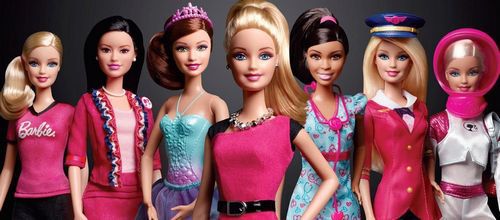The Marketing mix of Mattel analyses the 4Ps of Mattel, which includes the Product, Price, Place, and Promotion of Mattel. Mattel, Inc. is a publicly-traded company of American origins. It is associated with the entertainment industry and deals in the manufacturing and marketing of toys. It was founded in 1945 by its co-founders Ruth Handler, Elliot Handler, and Harold Matson. Mattel was ranked at 403rd position in the year 2014 on the list of Fortune 500. Some of its competitors are as follows-
- Hot Toys
- Neca
- McFarlane Toys
- Bandai Toys
- Hasbro
About Mattel
- Type: Toy manufacturing company.
- Industry: Toys and games
- Founded: 1945
- Founders: Ruth Handler, Elliot Handler, Harold Matson
- Headquarters: United States
- Area served: Worldwide
- Key people: Ynon Kreiz (CEO) and Richard Dickson (President and COO)
- Number of employees: Over 32,000 worldwide
Table of Contents
Mattel Product Strategy
Mattel is a multinational company that has several brands associated with it, like WWE Toys, Board Games, American Girls Dolls, Master of the Universe Toys, Hot Wheels, Matchbox Toys, Winx Club Dolls, Ever After High Dolls, Monster High Dolls, Barbie Dolls, and Fisher-Price.
During the 1980s, it has also been associated with video games. Barbie is its most popular brand, with a product line including dolls, clothes, and accessories. Mattel has an expanded product kit, and it includes home games like
Puzzle-
- Trick Tracks Surreal Stunts
- Hot Wheels Matching Game
- Limo Jam
- Kooky Kitchen
Arcade
- Series Slamdown
- Kanani Ocean Rider
- Hot Wheels Party Panic
- Aerial Attack Robot swarm
Makeover
- Rock Star Makeover
- Super Wedding Stylist
- Beauty Studio
- Barbie Groom and Glam Pups
Racing
- Ferrari X-V Speed trial
- Monster Jam Ultimate Stunt Jumper
- Battle Force 5 Shatterbolt Siege
- Beast Bash Beware
Action
- Parachutes Away
- Web Trading Cars Chase
- Cyborg Blaster
Activity
- Flower surprises
- Dance with Barbie
Sports
- Pet Soccer
- Freaky Footwork
Dress-up
- Wacky Wardrobe
- Part Dress
Mattel is a renowned toy manufacturer.
The product mix of Mattel in 2023 is as follows (Source):
- Barbie dolls: These iconic dolls have been a staple of Mattel’s lineup for decades, featuring various styles, professions, and themes.
- Hot Wheels: A famous brand of die-cast toy cars, which includes a variety of vehicles, track sets, and playsets.
- Fisher-Price: This range includes educational, role-play, and baby gear designed for younger children and infants.
- American Girl dolls: A line of 18-inch dolls with books, accessories, and thematic playsets.
- Monster High dolls: A series of fashion dolls inspired by monster movies, sci-fi horror, and thriller fiction.
- UNO: A viral card game owned by Mattel, suitable for family and friends.
- Thomas & Friends: A range of toys based on the famous children’s television series, including train sets and miniature figures.
- Mega Bloks: A line of construction toys similar to LEGO designed for younger children.
- Board games: Mattel also produces classic and family board games like Scrabble, Pictionary, and Apples to Apples.
These products highlight Mattel’s marketing efforts, focusing on various age groups, interests, and playstyles, from educational toys for toddlers to collectible items for older children and collectors.
Mattel Place Strategy
Mattel has spread its brand image and presence from the United States to the rest of the world, as its products are readily available in most countries. Its headquarters is in El Segundo, California. Mattel has a physical presence in forty countries. In contrast, its products are obtainable in nearly one hundred and fifty countries like the United States, China, India, Egypt, and the United Kingdom.
Its operations have been divided into three business segments: American Girl, International, and North America. It has a strong distribution channel via supermarkets, hypermarkets, convenience stores, discount markets, and gaming outlets, including distributors, retailers, stockists, and consumers.
Mattel’s place strategy is as follows:
- Global Retail Presence: Mattel products are distributed worldwide through retailers, including big-box stores, specialty toy stores, and online marketplaces.
- Direct-to-Consumer Sales: The company has strengthened its online presence, offering products directly to consumers through its websites and digital platforms.
- Strategic Partnerships: Mattel collaborates with major retailers and e-commerce platforms for exclusive product releases and promotional campaigns.
- International Expansion: Mattel focuses on expanding its market reach by targeting emerging markets and adapting products to local preferences and cultures.
- Supply Chain Efficiency: The company continually optimizes its supply chain operations to ensure product availability and timely distribution across its global network.
Mattel Pricing Strategy
Regarding the brand value of revenues, Mattel is the largest toymaker in the world, with estimated revenues at the end of the financial year 2014 at 6,023.8 million dollars and a net income of 498,9 million dollars. Mattel has a diversified product portfolio and has adopted a variable pricing policy because its products are meant for every section of society.
Its pricing range varies from reasonable for middle-class people to mid-premium for upper-middle-class people and premium for an upper-class section of society because its products are segregated accordingly. Mattel has started selling its products via online mediums, and it has turned out to be a boon for the company’s marketing management as it has been able to save on production and distribution costs. This has resulted in selling at reduced prices and gaining a new customer base and, ultimately, larger profit margins.
Mattel’s pricing and marketing strategy is multifaceted and strategically designed to cater to a diverse consumer base and maintain competitive advantage:
- Market Penetration Pricing: Mattel often employs penetration pricing for new products to attract buyers and establish a market presence quickly. This strategy incredibly effectively introduces innovative toys and games to a competitive market.
- Premium Pricing for Exclusive Lines: Mattel sets higher prices for exclusive and collector’s items, such as limited-edition Barbie dolls. This approach capitalizes on these products’ uniqueness and perceived value, appealing to collectors and enthusiasts.
- Competitive Pricing: In highly competitive segments like educational toys and board games, Mattel adopts competitive pricing to match or slightly undercut competitors, ensuring they remain a preferred choice among consumers.
- Price Skimming for Innovative Products: For technologically advanced or innovative products, Mattel uses price skimming, setting initial high prices to maximize profits from early adopters before gradually lowering prices.
- Dynamic Pricing: Leveraging data analytics, Mattel adjusts prices based on market demand, competition, and consumer behavior trends. This dynamic approach helps in maximizing profits while remaining adaptable to market changes.
Through these varied pricing and marketing strategies, Mattel effectively targets different market segments, maximizes revenue opportunities, and maintains a strong brand presence in the global toy industry.
Mattel Promotion Strategy
Mattel is a transnational organization and has adopted intensive marketing policies to launch its products in the international market and to increase its brand visibility. It has launched several ad campaigns shown via electronic, print, and other social media platforms, on television, magazines, YouTube, company websites, shopping portals for toys, and newspapers.
To gain brand recognition and awareness, its marketing team handles TV shows, live events, web series, and gaming events as part of promotional activities. One of its brand characters, Barbie, has participated in animated films and is a supporting character in movies like Toy Story 2 and 3. Mattel has roped in several famous personalities to act as its brand ambassador. Indian actor Katrina Kaif has been associated with Barbie as its public face and unveiled its collection in 2009 at Lakme Fashion Week, dressed as a Barbie Doll.
Mattel’s promotion online sales strategy is as follows:
- Extensive Advertising: Mattel invests heavily in advertising across multiple platforms, including TV commercials, digital marketing, and social media campaigns, to reach a broad audience and create brand awareness.
- Collaborations and Licensing: The company frequently collaborates with popular movie franchises, celebrities, and other brands for exclusive toy lines and promotional tie-ins, leveraging their popularity to boost sales.
- Engaging Customer Experiences: Mattel creates interactive customer experiences through events, online contests, and in-store displays, enhancing customer engagement and brand loyalty.
Some Recent Video ads and Print ads of Mattel are:
https://youtu.be/pvmmU1sRKWY
What new strategies is Mattel adopting to maintain its market leadership in the toy industry?
In recent years, Mattel has increasingly focused on leveraging digital transformation to enhance consumer engagement and streamline operations. According to a 2023 report from MarketsandMarkets, the global smart toys market is projected to reach $24.0 billion by 2025, with Mattel expanding its product offerings to include more tech-infused toys such as voice-activated games and augmented reality experiences. This shift is in response to growing consumer demand for interactive and educational play experiences, aiming to capture the interest of tech-savvy children and their parents.
Furthermore, Mattel is exploring environmentally friendly initiatives to align with growing consumer preferences for sustainable products. As reported by GreenBiz in 2022, Mattel has committed to using 100% recycled, recyclable, or bio-based plastics across all its products and packaging by 2030. The introduction of the ‘Barbie Loves the Ocean’ line, which is made from recycled ocean-bound plastics, demonstrates Mattel’s efforts to appeal to eco-conscious consumers and contribute to sustainability in the toy industry.
Liked this post? Check out the complete series on Marketing Mix

